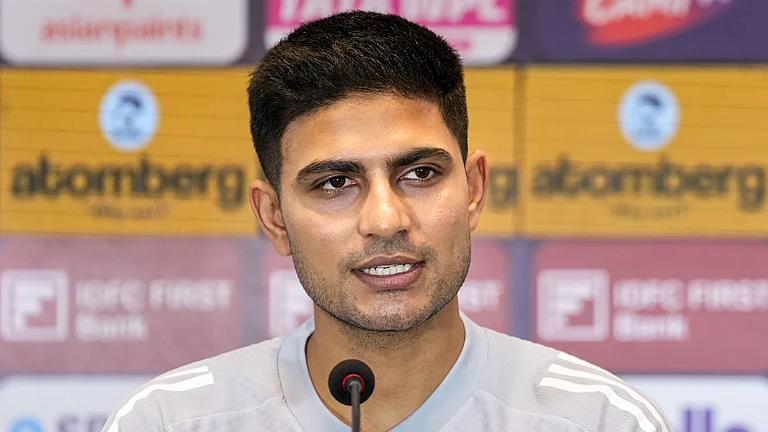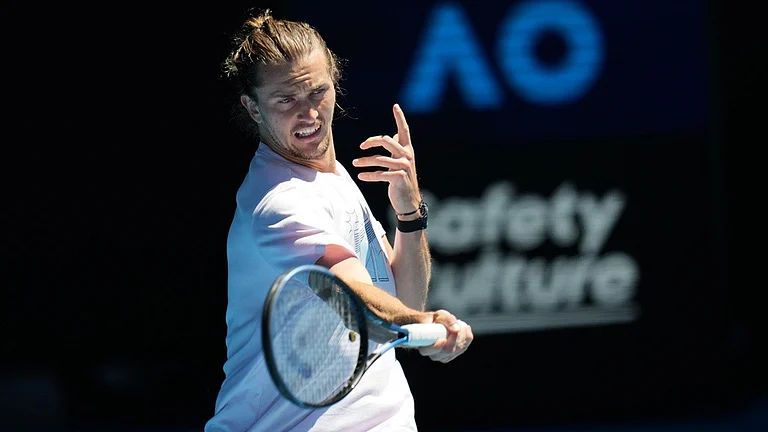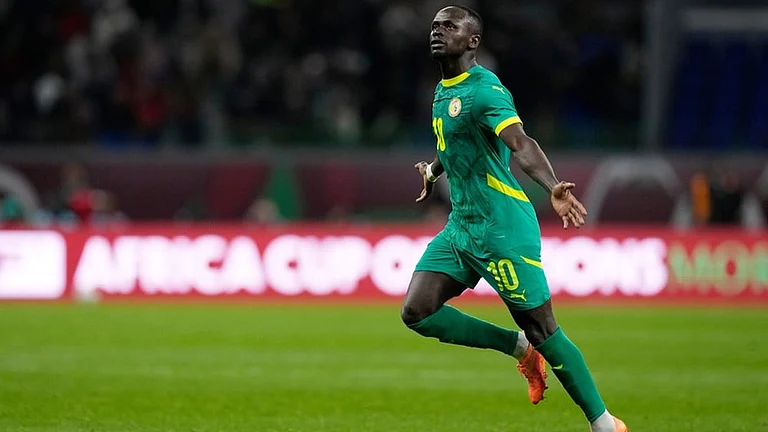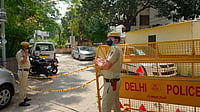Voting ended for the first phase of the Gujarat Assembly elections with a moderate 60.23 per cent voter turn-out on Thursday across 89 seats in 19 districts of Saurashtra-Kutch and southern regions, the Election Commission said.
While voting began at 8 in the morning and ended at 5 pm, the average turnout stood provisionally at 60.23 per cent, the Election Commission (EC) said. The voter turn-out figure was provisional as data from some polling stations had not been received and it also did not include postal ballots, the Election Commission said.
The voter turnout was less than 66.75 per cent recorded in the first phase of the 2017 Assembly polls.
Barring a few incidents of technical glitches, polling was largely peaceful, election officials said. Voting was halted in a few places due to malfunctioning of Electronic Voting Machines as well as control units and Voter Verifiable Paper Audit Trail (VVPATs) but the faulty units were replaced and the process resumed, they added.
Turn-out trends in key districts
As per the provisional figure, Narmada district recorded the highest voter turnout at 73.02 per cent followed by Tapi district at 72.32 per cent. As many as eight districts recorded more than 60 per cent voting. Surat registered 60.17 per cent turnout and Rajkot 57.69 per cent, according to EC data.
In the 2017 Assembly elections, a voter turnout of 66.75 per cent was recorded in the first phase (covering 83 seats), while the final figure after the end of second and last phase of polling stood at 68.41 per cent.
Voting for the first phase of Gujarat Assembly elections commenced at 8 am today where 788 candidates are in the fray. Campaigning for the first phase of the elections in the Bharatiya Janata Party (BJP)-ruled state ended at 5 pm on Tuesday.
Voting was held between 8 am and 5 pm on Thursday across 14,382 polling stations, the office of the state Chief Electoral Officer (CEO) said in a release.
Who all have fielded candidates?
Out of the 89 seats going to polls in the first phase, the BJP won 48 in the 2017 election, the Congress had won 40, while one seat was bagged by an independent candidate.
Apart from the BJP, Congress and Aam Aadmi Party (AAP), 36 other political outfits, including the Bahujan Samaj Party (BSP), Samajwadi Party (SP), Communist Party of India-Marxist (CPI-M) and Bharatiya Tribal Party (BTP) have also fielded candidates in various seats which will go to polls in the first phase.
The BJP and Congress are contesting in all the 89 seats.
The new poll entrant AAP is contesting in 88 seats. Its candidate from Surat East constituency had withdrawn his candidature, leaving the party with one less seat to contest in the first phase.
Among other parties, the BSP has fielded 57 candidates, BTP 14 and CPI-M four candidates.
As many as 339 independents are also in the fray in the first phase of polls.
Out of the total 788 candidates, 70 are women including nine fielded by the BJP, six by the Congress and five by the AAP.
Who are the most prominent candidates?
AAP's chief ministerial candidate Isudan Gadhvi is contesting from Khambhalia seat in Devbhumi Dwarka district of Saurashtra region that goes to polls on Thursday. AAP state unit president Gopal Italia is contesting from Katargam in Surat.
Among other prominent candidates in the first phase are Rivaba Jadeja, the wife of cricketer Ravindra Jadeja, who is contesting from Jamnagar (North), and BJP MLAs Harsh Sanghavi and Purnesh Modi from different seats in Surat and five-time MLA Parshottam Solanki from Bhavnagar (Rural).
Sitting Congress MLAs like Lalit Kagathara, Lalit Vasoya, Rutvik Makwana and Mohammad Javed Pirzada are among the candidates in fray in the first phase from seats in Saurashtra region.
Seven-time MLA and veteran tribal leader Chhotu Vasava is contesting from Jhagadia in Bharuch.
Congress, BJP, AAP- A triangular contest
With 54 seats, the Saurashtra-Kutch region will be crucial for the Congress as it seeks to better its performance.
In the region, the Congress won 30 seats in 2017 compared to 16 in the 2012 election. The BJP, on the other hand, was reduced to 23 seats in 2017 as against 35 won by it in the previous election.
In south Gujarat, the Congress in 2017 bettered its tally to 10 compared to six in the previous polls, while the BJPs tally dropped to 25 in the last election from 28 earlier.
South Gujarat also comprises Surat city with 12 seats which have remained the BJP's bastion since a long time.
The BJP has this time found a challenger in the AAP which has fielded some of its senior state leaders from Surat and hopes to win seven-eight seats in the city, as declared by its national convener Arvind Kejriwal.
Gujarat AAP's state president Gopal Italia is the candidate from Katargam, general secretary Manoj Sorathiya from Karanj and Patidar community leader Alpesh Kathiriya from Varachha Road in Surat.
Gujarat Assembly Polls- Number crunching
Out of the total 4,91,35,400 registered voters in Gujarat, 2,39,76,670 are eligible to cast their votes in the first phase of the elections. These include 5.74 lakh voters in the age group of 18-19 years, and 4,945 above the age of 99 years, the office of the state CEO said.
Voting will be held across 14,382 polling stations, of which 3,311 are in the urban and 11,071 in rural areas, the poll body said in a release.
The election body has set up 89 'model polling stations', as many stations run by differently-abled people, 89 eco-friendly polling stations and 611 run by women. There are also 18 polling stations run by the youth, it said.
A total 34,324 ballot units, an equal number of control units, and 38,749 Voter verifiable paper audit trail (VVPAT) machines will be used for the election in the first phase, the release said.
A total of 2,20,288 trained officers and employees will be on duty for the smooth conduct of the election process, it said.
In the first phase, 27,978 presiding officers and 78,985 polling officers will be on duty, it said.
The BJP, Congress and AAP leaders held roadshows and addressed public rallies as part of their high-pitched campaign in the run-up to the elections.
The ruling party's campaign was led by Prime Minister Narendra Modi, Union Home Minister Amit Shah, BJP president JP Nadda, chief ministers of BJP-ruled states including Yogi Adityanath (Uttar Pradesh), Himanta Biswa Sarma (Assam), Shivraj Singh Chouhan (Madhya Pradesh), Pramod Sawant (Goa), and a number of Union ministers and state leaders.
For the AAP, Delhi Chief Minister Arvind Kejiwal and his Punjab counterpart Bhagwant Mann were the most frequent campaigners. Apart from them, Delhi's Deputy CM Manish Sosidoa and AAP's Rajya Sabha members Raghav Chadha and Sanjay Singh also campaigned in Gujarat.
The Congress banked on its local leaders for campaigning apart from Rajasthan CM Ashok Gehlot and party's national president Mallikarjun Kharge, who held some rallies in the last few days before the first phase of elections.
Congress leader Rahul Gandhi held two rallies in the state this month by taking out time from his ongoing Bharat Jodo Yatra.
The second phase of elections will be held on December 5 and results will be declared on December 8.
(With PTI Inputs)


























